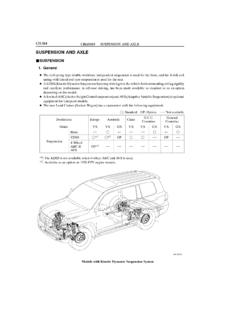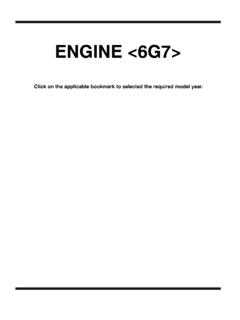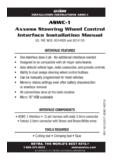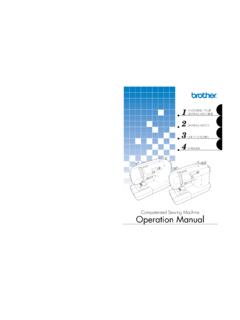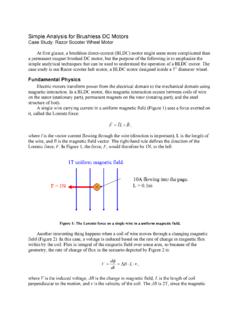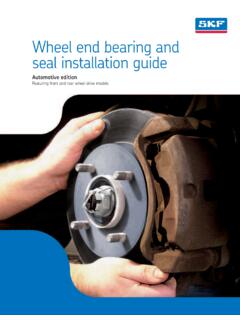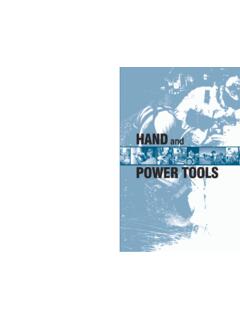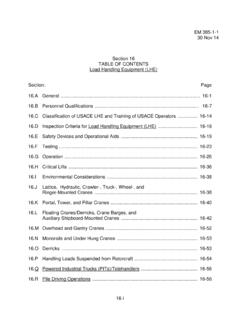Transcription of WIRING DIAGRAMS - uCoz
1 WIRING DIAGRAMSCONTENTS pagepageAIR 8W-42-1 AIRBAG 8W-43-1 ANTI-LOCK 8W-35-1 AUDIO 8W-47-1 CHARGING 8W-20-1 COMPONENT 8W-02-1 CONNECTOR 8W-80-1 CONNECTOR/GROUND 8W-90-1 FRONT 8W-50-1 FUEL/IGNITION 8W-30-1 FUSE/FUSE 8W-11-1 GENERAL 8W-01-1 GROUND 8W-15-1 HORN/CIGAR LIGHTER/POWER OUTLET . 8W-41-1 INSTRUMENT 8W-40-1 INTERIOR 8W-44-1 POWER 8W-10-1 REAR 8W-51-1 REAR WINDOW 8W-48-1 SPLICE 8W-70-1 SPLICE 8W-95-1 STARTING 8W-21-1 TRANSMISSION CONTROL 8W-31-1 TURN 8W-53-1 TJWIRING DIAGRAMS8W - 18W-01 GENERAL INFORMATIONINDEX pagepageDESCRIPTION AND OPERATIONCIRCUIT 4 CIRCUIT 4 CONNECTOR 7 ELECTROSTATIC DISCHARGE (ESD)SENSITIVE 1 NOTES, CAUTIONS, and 7 SECTION 5 SPLICE 5 TAKE 7 DIAGNOSIS AND TESTINGINTERMITTENT AND POOR 9 TROUBLESHOOTING 9 TROUBLESHOOTING 8 TROUBLESHOOTING WIRING 10 SERVICE PROCEDURESCONNECTOR AND TERMINAL REPLACEMENT.
2 12 CONNECTOR 11 DIODE 14 TERMINAL 13 TERMINAL/CONNECTOR 10 TERMINAL/CONNECTOR REPAIR THOMASAND BETTS 11 WIRING 10 SPECIAL 15 DESCRIPTION AND OPERATIONINTRODUCTIONC hrysler WIRING DIAGRAMS are designed to provideinformation regarding the vehicles WIRING content. Inorder to effectively use Chrysler WIRING DIAGRAMS todiagnose and repair a Chrysler vehicle, it is impor-tant to understand all of their features and are arranged such that the power (B+)side of the circuit is placed near the top of the page,and the ground (B-) side of the circuit is placed nearthe bottom of the switches, components, and modules are shownin the at rest position with the doors closed and thekey removed from the are shown two ways. A solid linearound a component indicates that the component iscomplete.
3 A dashed line around a component indi-cates that the component being shown is not com-plete. Incomplete components have a referencenumber to indicate the page where the component isshown is important to realize that no attempt is madeon the DIAGRAMS to represent components and wiringas they appear on the vehicle. For example, a shortpiece of wire is treated the same as a long one. Inaddition, switches and other components are shownas simply as possible, with regard to function - 01 GENERAL INFORMATION8W - 01 - 1 The System shown here is an EXAMPLE ONLY. It does not represent the actual circuit shown in the WIRINGDIAGRAM - 01 - 28W - 01 GENERAL INFORMATIONTJDESCRIPTION AND OPERATION (Continued)The System shown here is an EXAMPLE ONLY.
4 It does not represent the actual circuit shown in the WIRINGDIAGRAM - 01 GENERAL INFORMATION8W - 01 - 3 DESCRIPTION AND OPERATION (Continued)CIRCUIT INFORMATIONEach wire shown in the DIAGRAMS contains a codewhich identifies the main circuit, part of the maincircuit, gage of wire , and color (Fig. 1).CIRCUIT FUNCTIONSAll circuits in the DIAGRAMS use an alpha/numericcode to identify the wire and its function. To identifywhich circuit code applies to a system, refer to theCircuit Identification Code Chart. This chart showsthe main circuits only and does not show the second-ary codes that may apply to some 1 wire Code IdentificationWIRE COLOR CODE CHARTCOLOR CODECOLORSTANDARDTRACERCOLORBLBLUEWTBKBL ACKWTBRBROWNWTDBDARK BLUEWTDGDARK GREENWTGYGRAYBKLBLIGHT BLUEBKLGLIGHT GREENBKORORANGEBKPKPINKBK or WTRDREDWTTNTANWTVTVIOLETWTWTWHITEBKYLYEL LOWBK*WITH TRACERCIRCUIT IDENTIFICATION CODE CHARTCIRCUITFUNCTIONABATTERY FEEDBBRAKE CONTROLSCCLIMATE CONTROLSDDIAGNOSTIC CIRCUITSEDIMMING ILLUMINATION CIRCUITSFFUSED CIRCUITSGMONITORING CIRCUITS (GAUGES)HOPENINOT USEDJOPENKPOWERTRAIN CONTROL MODULELEXTERIOR LIGHTINGMINTERIOR LIGHTINGNNOT USEDONOT USEDPPOWER OPTION (BATTERY FEED)QPOWER OPTIONS (IGNITION FEED)
5 RPASSIVE RESTRAINTSSUSPENSION/STEERINGTTRANSMISSI ON/TRANSAXLE/TRANSFER CASEUOPENVSPEED CONTROL, WIPER/WASHERWOPENXAUDIO SYSTEMSYOPENZGROUNDS8W - 01 - 48W - 01 GENERAL INFORMATIONTJDESCRIPTION AND OPERATION (Continued)SECTION IDENTIFICATIONThe WIRING DIAGRAMS are grouped into individualsections. If a component is most likely found in a par-ticular group, it will be shown complete (all wires,connectors, and pins) within that group. For exam-ple, the Auto Shutdown Relay is most likely to befound in Group 30, so it is shown there complete. Itcan, however, be shown partially in another group ifit contains some associated symbols are used throughout the wir-ing DIAGRAMS . These symbols are consistent withthose being used around the worldGROUPTOPIC8W-01 thru 8W-09 General Information andDiagram Overview8W-10 thru 8W-19 Main Sources of Power andVehicle Grounding8W-20 thru 8W-29 Starting and Charging8W-30 thru 8W-39 Powertrain/DrivetrainSystems8W-40 thru 8W-49 Body Electrical items and A/C8W-50 thru 8W-59 Exterior Lighting, Wipers, andTrailer Tow8W-60 thru 8W-69 Power Accessories8W-70 Splice Information8W-80 Connector Pin Outs8W-90 Connector Locations(including grounds)8W-95 Splice LocationsTJ8W - 01 GENERAL INFORMATION8W - 01 - 5 DESCRIPTION AND OPERATION (Continued) WIRING Diagram Symbols8W - 01 - 68W - 01 GENERAL INFORMATIONTJDESCRIPTION AND OPERATION (Continued)
6 TERMINOLOGYThis a list of terms with there definitions used inthe WIRING Built For Sale InMarkets Other Than North AmericaExcept-Built-Up-Export .. Vehicles Built For Sale InNorth Hand Drive Hand Drive VehiclesATX .. Automatic Transmission-Front Wheel DriveMTX ..Manual Transmission-Front Wheel Transmission-Rear Wheel DriveMT ..Manual Transmission-Rear Wheel Over Head Cam Over Head Cam EngineCONNECTOR INFORMATIONCAUTION: Not all connectors are serviced. Someconnectors are serviced only with a harness. A typ-ical example might be the Supplemental RestraintSystem connectors. Always check parts availabilitybefore attempting a connectors are identified by a number, asfollows: In-line connectors located on theengine com-partment harnessareC100series numbers. Connectors located on theinstrument panelharnessareC200series numbers.
7 Connectors located on thebody harnessareC300series numbers. Jumper harness connectorsareC400seriesnumbers. Grounds and ground connectorsare identi-fied with a G and follow the same series number-ing as the in-line connectors are identified by the compo-nent name instead of a number (Fig. 2). Multipleconnectors on a component use a C1, C2, etc. identi-fier (Fig. 3).LOCATIONSS ection 8W-90 contains connector/ground locationillustrations. The illustrations contain the connectorname (or number)/ground number and componentidentification. Connector/ground location charts inSection 8W-90 reference the illustration number forcomponents and 8W-80 shows each connector and the cir-cuits involved with that connector. The connectorsare identified using the name/number on the Dia-gram LOCATIONSS plice Location charts in Section 8W-70 show theentire splice, and provide references to other sectionsthe splice 8W-95 contains illustrations that show thegeneral location of the splices in each harness.
8 Theillustrations show the splice by number, and providea written , CAUTIONS, and WARNINGST hroughout this group additional important infor-mation is presented in three ways; Notes, Cautions,and used to help describe how switches orcomponents operate to complete a particular are also used to indicate different conditionsthat may appear on the vehicle. For example, anup-to and after used to indicate information thatcould prevent making an error that may damage information to prevent per-sonal injury and vehicle damage. Below is a list ofgeneral warnings that should be followed any time avehicle is being : ALWAYS WEAR SAFETY GLASSES FOREYE : USE SAFETY STANDS ANYTIME A PRO-CEDURE REQUIRES BEING UNDER A 2 Component IdentificationFig. 3 Connector IdentificationTJ8W - 01 GENERAL INFORMATION8W - 01 - 7 DESCRIPTION AND OPERATION (Continued)WARNING: BE SURE THAT THE IGNITION SWITCHALWAYS IS IN THE OFF POSITION, UNLESS THEPROCEDURE REQUIRES IT TO BE : SET THE PARKING BRAKE WHENWORKING ON ANY VEHICLE.
9 AN AUTOMATICTRANSMISSION SHOULD BE IN PARK. A MANUALTRANSMISSION SHOULD BE IN : OPERATE THE ENGINE ONLY IN AWELL-VENTILATED : KEEP AWAY FROM MOVING PARTSWHEN THE ENGINE IS RUNNING, ESPECIALLY THEFAN AND : TO PREVENT SERIOUS BURNS, AVOIDCONTACT WITH HOT PARTS SUCH AS THE RADIA-TOR, EXHAUST MANIFOLD(S), TAIL PIPE, CATA-LYTIC CONVERTER, AND : DO NOT ALLOW FLAME OR IN AND AROUND THE : ALWAYS REMOVE RINGS, WATCHES,LOOSE HANGING JEWELRY, AND LOOSE OUTSThe abbreviation T/O is used in the componentlocation section to indicate a point in which the wir-ing harness branches out to a DISCHARGE (ESD) SENSITIVEDEVICESAll ESD sensitive components are solid state and asymbol (Fig. 4) is used to indicate this. When han-dling any component with this symbol comply withthe following procedures to reduce the possibility ofelectrostatic charge build up on the body and inad-vertent discharge into the component.
10 If it is notknown whether the part is ESD sensitive, assumethat it is.(1) Always touch a known good ground before han-dling the part. This should be repeated while han-dling the part and more frequently after slidingacross a seat, sitting down from a standing position,or walking a distance.(2) Avoid touching electrical terminals of the part,unless instructed to do so by a written procedure.(3) When using a voltmeter, be sure to connect theground lead first.(4) Do not remove the part from its protectivepacking until it is time to install the part.(5) Before removing the part from its package,ground the package to a known good ground on AND TESTINGTROUBLESHOOTING TOOLSWhen diagnosing a problem in an electrical circuitthere are several common tools necessary.
